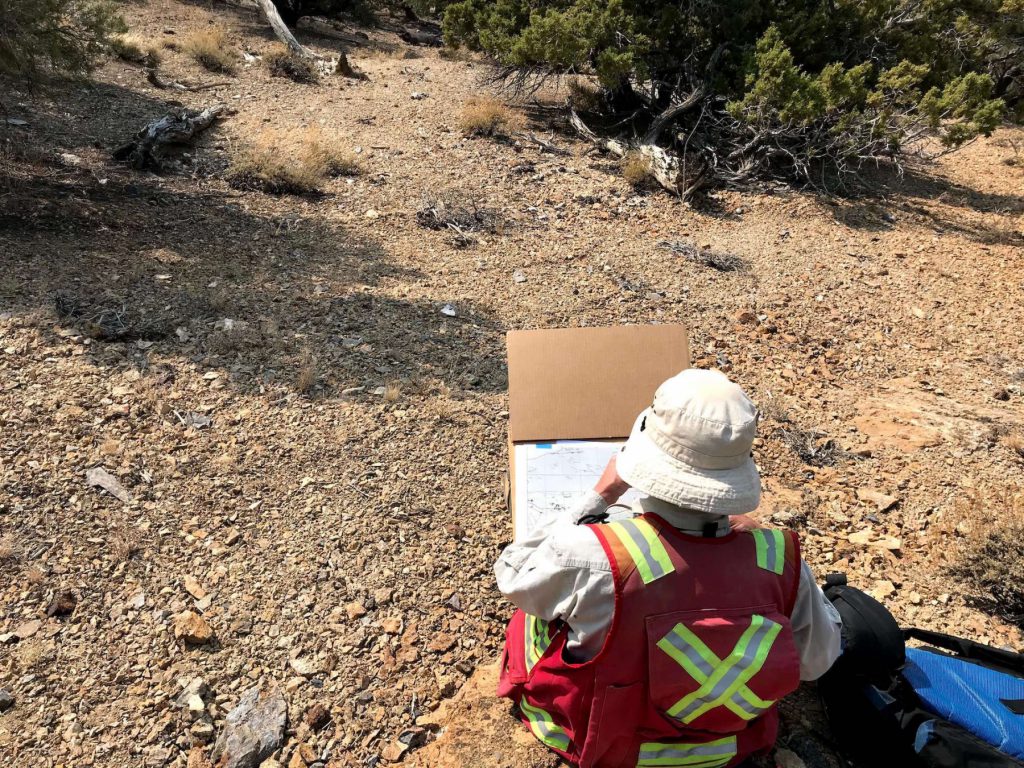Athena Gold samples high-grade gold from Buster Mine, Excelsior Springs Project, Walker Lane, Nevada

Athena Gold Corp. [CSE: ATHA; OTCQB: AHNR] reported high-grade gold and silver samples from its first-ever underground mapping and sampling program at its flagship Excelsior Springs project in Nevada’s prolific Walker Lane District. Five samples were collected underground from the past-producing Buster Mine, which historically produced an estimated 19,200 oz gold at an average grade of 41.1 g/t gold. Two of these samples returned high-grade Au, including: 50.6 g/t Au and 33.7 g/t Ag over 0.3 metres from the 75′ level; and 28.1 g/t Au and 29.6 g/t Ag over 1.0 metre, from the 125′ level.
The reconnaissance program conducted in August 2024 represents Athena’s first-time underground at the Buster Mine, providing an opportunity for the team to have a close-up look at the mineralized orebody and gain a better understanding of structural controls at Excelsior.
Historical sampling included four samples which exceeded the upper detection limit of 10 g/t Au; however, these were never analyzed to completion. The geologist who collected the surface and underground samples at the Buster Mine in 1986 estimated a mineralized zone containing a historical mineral inventory of up to 200,000 oz Au within a shallow depth of 61 metres. This estimate is historical in nature and should not be relied upon as a current mineral resource.
“We are pleased to see sampling results confirm the high-grade nature of the epithermal veins at the historic Buster Mine. In addition, we now have a much better understanding of structural controls on mineralization at Excelsior, which should bode well for our planning our upcoming drill program,” stated John Power, President and CEO of Athena Gold. “Due to small stoping dimensions and uncertain ground conditions, we were unable to sample over broader zones; however, we have reason to believe that high-grade, vein-hosted mineralization ‘bleeds’ into the host rock as evidenced by previous drilling at Excelsior.
“The Buster Mine area is located 400 metres from the Western Slope Zone where our recent RC drill campaigns returned several impressive intercepts including up to 5.2 g/t Au over 33 metres. Importantly, the geochemistry at Buster and the Western Slope Zone appear very similar, providing evidence that both systems may be one of the same, and opens up the possibility of a larger, mineralized system connecting these two zones.”
Two distinct structural orientations were observed and believed to be controlling mineralization, both east-west striking. The first is very steeply north dipping and yielded 50.6 g/t Au over 0.3 metres. This sample was collected near the eastern stope on the 75′ level, where historical sampling returned 5.8 g/t Au over 1.07 metres. Historically, the higher-grade samples which exceeded the 10 g/t Au detection limit were collected from the western stope on the 75′ level. Most of the past production occurred within the western stope, which extends from near surface to the 125′ level.
On the 125′ level, a shallow 35° north dipping fault zone yielded 28.1 g/t Au over 1.0 metre. The steeper structures identified on the 75′ level appear to be cut by this younger, shallow structure.
This work program demonstrated the important role these shallow structures, which can be traced on surface, play in the control of mineralization at Excelsior Springs. Additional surface and underground mapping will be conducted to better understand the distribution and extent of mineralization along these structures to better target future drilling.
The Buster Mine is located on the Fortunatus patented claim owned by Athena and is an integral part of our flagship Excelsior Springs Project.
Mineralization at the Buster Mine was discovered in 1872 and has been through several periods of small-scale mining and exploration efforts. During the late 1800s and perhaps the early 1900s there was unconfirmed reported production from the Buster Mine of an estimated 19,200 oz Au at an average grade of 41.1 g/t Au.
The Buster Shaft is 235′ deep, with workings on the 75′, 125′, and 175′ levels. It is estimated there is approximately 1,540′ of accessible workings, most of which are on the 75′ and 125′ levels.
The Excelsior Springs Project lies within the prolific Walker Lane tectonic trend, a large region of northwest-trending, strike-slip fault zones that host a significant number of precious metal deposits having very strong structural control for mineralization. The Walker Lane trend is experiencing a major resurgence of intense and successful exploration and development.
The project contains numerous prospect pits, trenches, roads, surface sampling sites and 113 drill holes to date within a 300m X 3,000m wide (1,000 foot-wide and 10,000-foot-long east-west trending zone of shearing and alteration. Underground workings on the two patented claims within the project had unverified, historical production of 19,200 oz at 41.1 g/t Au.
Based on the results of previous drilling programs, the project has the potential with to host one or more shallow gold deposits amenable to open pit mining, along with deeper, higher grade feeder zones that may be found and could be mined by underground methods. In the opinion of management and its consultants, the project is very promising and further exploration has the potential to expand the known mineralization and establish additional mineralized zones.
